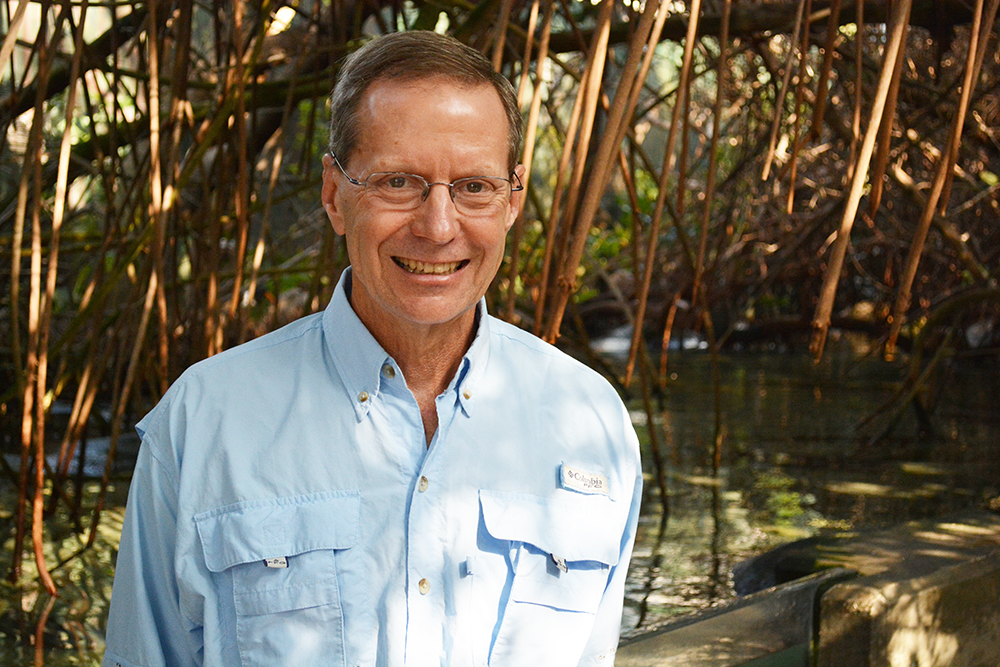Blog
Mangroves | 25 Years in the Making
July 23, 2020
25th Anniversary
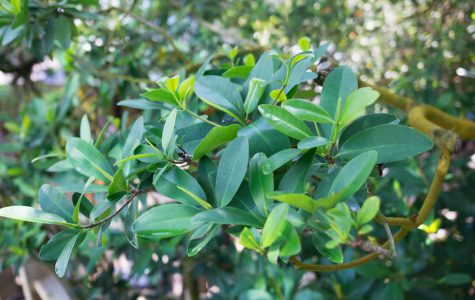 Walking through the Mangrove Tunnel at The Florida Aquarium’s Wetlands Trail exhibit, visitors couldn’t be blamed for believing the bizarre surroundings were sculpted for dramatic effect.
Walking through the Mangrove Tunnel at The Florida Aquarium’s Wetlands Trail exhibit, visitors couldn’t be blamed for believing the bizarre surroundings were sculpted for dramatic effect.
Nicknamed the “walking tree,” the red mangrove’s tangled roots do indeed look as if they could prowl about the hall. The dense canopy adds to the weird effect.
But there is nothing fake about these mangroves, which have been at The Florida Aquarium since it opened 25 years ago.
Associate Curator Eric Hovland, who also has been at The Aquarium 25 years, said before the attraction opened the staff collected mangrove propagules, “the green bean looking” seeds that the reproducing mangroves drop into the water, where they float until coming to an area where they can take root. The propagules then were planted in pots. (All this was done with the necessary state and federal permits.)
When The Florida Aquarium opened in March 1995, the sturdy mangroves that now form the tunnel were on display, but only as tiny plants. The large mangroves back then were artificial, built with rebar, fiberglass and other materials. They looked real, but the immersion in water caused them to deteriorate and Hovland said they required frequent maintenance.
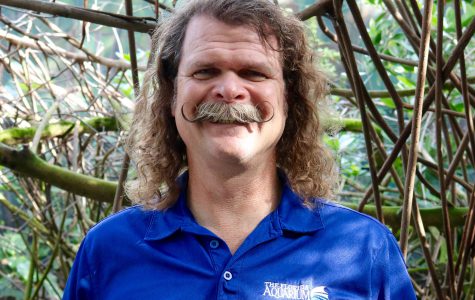 Fortunately, the real mangroves thrived in the glass-ceiling habitat.
Fortunately, the real mangroves thrived in the glass-ceiling habitat.
The once-potted mangroves were planted throughout the display and soon formed a veritable jungle. The Aquarium got rid of the phony mangroves.
“I had to use a Sawzall to cut them out,” said Hovland. “You might still be able to see a faint trace of where fake mangrove roots came down to the floor, though we’ve glazed it over.”
The Aquarium’s mangroves continue to reproduce, generating propagules that the staff collects, plants and grows, providing a supply of mangroves for other aquariums and conservation programs, including Tampa Bay Watch.
“We started with those potted plants and now have mangroves coming out of our ears,” Hovland jokes.
And that’s a good thing, because the mangrove is truly, as Hovland puts it, “the wonder of plants.”
The mangrove even creates land. After the propagule drifts into shallow water and takes roots, it grows that striking latticework of roots that collects floating debris and eventually begins to form islands.
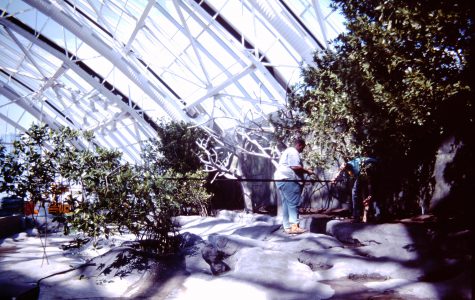 The underwater maze furnishes habitat for fish and other creatures. The falling leaves supplies sustenance for bacteria, algae and tiny invertebrates such as shrimp and other organisms at the bottom of the food web. The thick canopy above serves as vital roosting sites for birds.
The underwater maze furnishes habitat for fish and other creatures. The falling leaves supplies sustenance for bacteria, algae and tiny invertebrates such as shrimp and other organisms at the bottom of the food web. The thick canopy above serves as vital roosting sites for birds.
Consider the Richard T. Paul Alafia Banks Bird Sanctuary in Hillsborough Bay. It attracts 5,000 to 10,000 nest pairs of shore birds each year. Most roost atop mangroves.
While juvenile fish seek the refuge in the mangroves’ corridor of roots, anglers know that many lunker fish, including snook, redfish and even tarpon, can be found cruising along mangroves for prey.
As the mangrove forests provide essential habitat for wildlife, the anchoring roots also serve as a breakwater that stabilizes the shore, prevents erosion and minimizes storm surge. In addition, like so many shoreline plants, mangroves filter the water, absorbing nutrients and other pollutants.
No wonder, Hovland says mangroves “are like Windex. They make everything better. If you don’t like hurricanes, don’t cut mangroves. If you want more fish habitat, don’t cut mangroves. If you want clean water, don’t cut mangroves. If you don’t want erosion, don’t cut mangroves.”
 Alas, the mangrove’s cost-free services were not always appreciated, and the trees were cavalierly destroyed during the years of unchecked development.
Alas, the mangrove’s cost-free services were not always appreciated, and the trees were cavalierly destroyed during the years of unchecked development.
Scientists estimate Tampa Bay has lost 44 percent of its mangrove and marsh wetlands.
State regulations now provide some protections, though landowners can, with permits, do some trimming.
Florida actually has three species of mangroves. The Aquarium’s Mangrove Tunnel is made up of the red mangrove, the most common and the one with the distinctive curvy roots.
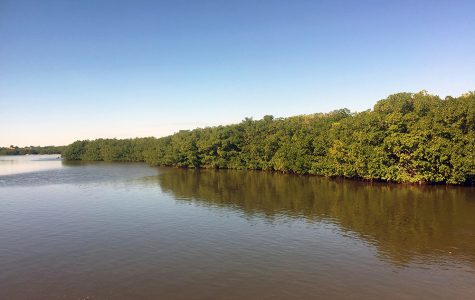 The black mangrove grows on slightly higher ground, though it can sustain being flooded. It too has a distinctive root system. It grows long “cable roots” in the mud that, in turn, put up numerous finger-like projections around the tree’s base that conduct oxygen to the tree. The projections are called pneumatophores.
The black mangrove grows on slightly higher ground, though it can sustain being flooded. It too has a distinctive root system. It grows long “cable roots” in the mud that, in turn, put up numerous finger-like projections around the tree’s base that conduct oxygen to the tree. The projections are called pneumatophores.
The white mangrove generally is found on dry land and lacks the curious root systems of the red and the black. But all three species have specialized mechanisms for surviving a salty environment. Those include concentrating salt in their leaves and then shedding the leaves through the year.
Mangrove forests are ecological wonders, but are not kind to human visitors. Any attempt to negotiate one’s way through the vegetative web is likely to result in a tumble amid the roots, shells and muck. In any event, people should not disturb this critical wildlife habitat.
In contrast, The Aquarium’s Mangrove Tunnel offers visitors a close up, but pain-free, view of this marvel of nature’s environmental engineering. It also showcases one of the Aquarium’s original habitats that, like the Aquarium, has grown and flourished through the years.
Indeed, in some ways, these mangroves’ resilience and growth can be seen as emblematic of The Aquarium’s own evolution into a major entertainment-education complex that is strongly rooted in its conservation mission.
More
to Sea
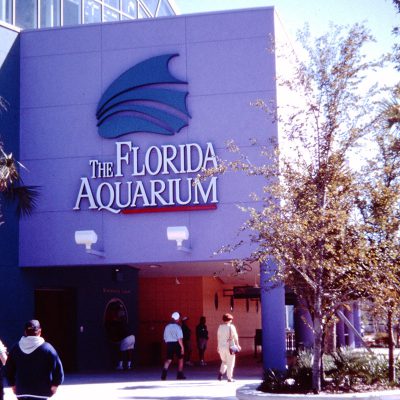
25th Anniversary: Sandy Freedman...
Former Tampa Mayor Sandy Freedman said some daring was required to find a home for The Florida Aquarium. She recalled: “It had originally been planned for Clearwater and then it proposed all over th...
Read More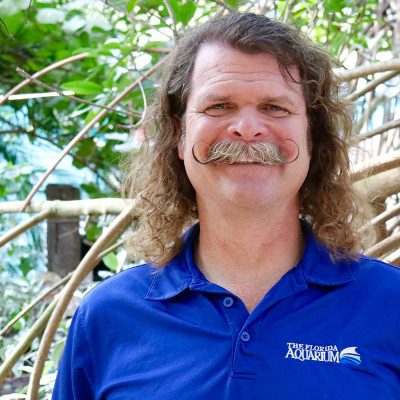
25th Anniversary: Eric Hovland’s Journe...
As a young biologist with a lifelong passion for wildlife, Eric Hovland was thrilled to be hired in November 1994 at The Florida Aquarium, which was still under construction. “I had heard about this...
Read More
